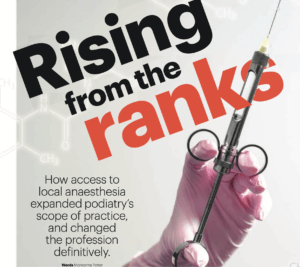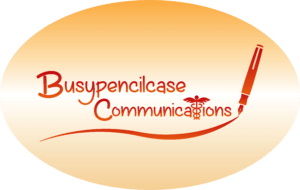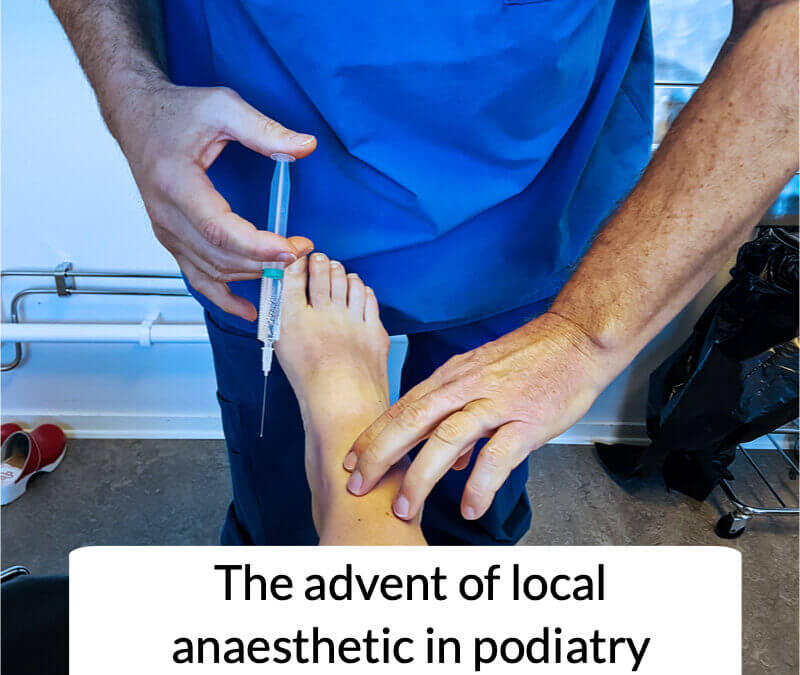When Did Podiatrists First Use Local Anaesthetic?

The story of when podiatrists first used local anaesthetic was published here at ConsultingFootPain in August 2018. I have updated this to reflect a recent article in the January 2021 edition of The Podiatrist- ‘Rising from the Ranks’, which has provided more information worth highlighting (Potter, M). Additionally, I go behind the scenes in my latest book, Podiatrist on a Mission. The Genesis of a New Profession (Tollafield 2021), in which I asserted that podiatry really only came about because of access to anaesthetics. My autobiographical account, however, is a bit more gritty and less academic and depicts a scene where two students are having an emotional interaction. Everyone likes the human element! The value, importance and opportunity that arose have underpinned podiatry since 1974.
The Medicine’s Act of 1968
Podiatrists started first to use a local anaesthetic before it was included in the Medicine’s Act, which was then modified in 1968 but excluded podiatrists from using prescription-only medicine. The Podiatry Association was established to overturn some of the older legislation left over from the 1938 Board of Registration of Medical Auxiliaries, which shackled the development of the then profession of chiropody. Most podiatrists would agree that the advent of local anaesthetic, that is, the ability to produce numbness in and around a painful part of the foot, impacted the profession of podiatry significantly. Today, all podiatrists can offer essential care with this pain-relieving medication legally. However, it was not something that had just happened overnight. The profession of podiatry actually fought against itself at one point, which seems bizarre in today’s attitudes toward doing the right thing for the patient. This historical fact was uncovered in a PhD thesis by Dr Alan Borthwick.
Introduced into schools of podiatry late 70’s
In 1978, schools of chiropody (as they were called before the term podiatry) introduced the local anaesthetic certificate as part of the three-year diploma course (DPodM). This has now been replaced by the BSc (Podiatry) degree, but ’78 was a momentous occasion for me, not that we as students quite realised we were the first cohort at London Foot Hospital to acquire this skill formally. The year before, I recall, a good friend (and best man at my wedding) had to come back after qualifying to take the course as an add-on… and pay for it out of his pocket. How lucky we were. Soon after, Part A (theory) and Part B practical local anaesthetic courses were run to allow previously qualified podiatrists to upgrade. It may seem strange that we started with the toe block, as shown. Thankfully, today, podiatrists can offer patients a range of different methods of treating without pain.
The introduction of Independent Prescribing has become an important addition to the treatment and management of patient pain, inflammatory conditions, and infection. This development arose from the former practice of patient group directives.
History & Podiatry
Martin Harvey comments
Digging back into my memory and library, LeRossignol and Holiday in a ‘pharmacopoeia for chiropodists’ (1937) refer to Benzocaina and Orthocaina in the Schedule 1 poisons list, which under the terms of the Pharmacy and Poisons Act 1933 a Chiropodist can “purchase by attending and signing the poisons register of a chemist to whom he is personally known” (notice the word “he”) they group these into a diverse and large set of another schedule one medication which includes creosote, iodidum rubrum as well as nitric and perchloric acids!. They also observe that anaesthesia is rarely required in chiropody. That puts me in mind of the famous statement by the principal of a school who claimed one only needed a “sharp scalpel and a keen eye” a few decades later when discussing LA. Winograd or neurectomy with a leather strap between the teeth and a quick dollop of perchloric acid, anyone? Sam Pitts, Chair of the Institute of Chiropodists (now the IOC & Podiatrists) in the 1960s wrote that “many chiropody courses in the 1930s adverted to local anaesthesia and it was undoubtedly in ‘ad hoc’ use in the 1950’s according to our archives. There was no national agreement on its use as far as I can see from the Institutes’ archives, indeed some opposed it. It’s probable that such ad hoc use depended on the local medical landscape, cooperation with local doctors, etc. Naturally, the 1968 Medicines Act then came along, and everything changed.
I qualified from the London Foot Hospital in June 1970. It was a Diploma course in chiropody, there were no podiatrists except as an address. The Telegraphic address of the Society of Chiropodists was ‘Podiatrist, London’. How this originated I have no idea. It would be interesting to know if some far sighted individual chose the address with hope for the future. Graham,R B 2017
A new era, a new in-house journal

The official journal, THE PODIATRIST (College of Podiatry) issue covers January 2021, replaced PODIATRY NOW.
It is wonderful that Morwenna Potter (Jan-Feb 2021) published her article in the first UK journal-magazine, The Podiatrist, which was formally Podiatry Now. The magazine is available from the College of Podiatry or free to members as an online download.
Thanks for reading ‘When did podiatrists first use local anaesthetic’ published by David R. Tollafield.
Published by Busypencilcase Communications & Publications. Est. 2015



Recent Comments